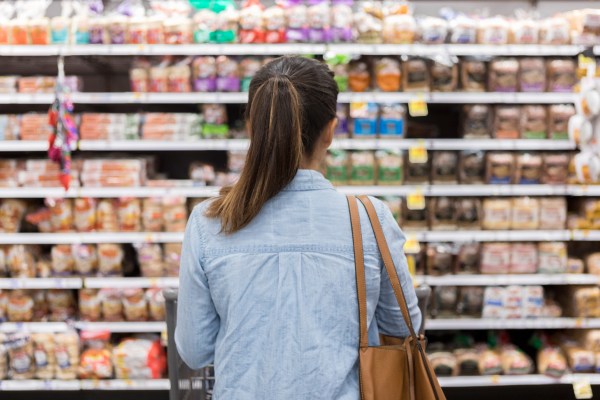Poor grocery demand forecasting is responsible for more waste than you might expect.
According to one source, grocery stores in the U.S. toss 10% of the roughly 44 billion pounds of food that the country produces annually. It’s not only bad for the environment — food waste is a major source of carbon emissions — but costly for grocers. Per Retail Insights, food and grocery retailers lose up to 8% of revenues through inadequate inventory availability.
Entrepreneurs Euro Wang and Jack Solomon say that they experienced firsthand the micro-level effects of the forecasting problem at their local supermarket, which often ran out of their favorite guacamole.
“It turns out that even the largest retailers struggle to predict future demand and frequently overstock and understock inventory,” Wang told TechCrunch in an email interview. “With more extreme weather in recent years, there’s increasingly been supply shortages in fresh food. That makes the efficient allocation of the limited supply all the more important. On top of this, inflationary pressures and increases in labor costs have been threatening grocers’ margins more and more.”
Inspired to attempt tackling the problem with tech, Wang and Solomon co-founded Guac, a platform that uses AI to predict how many items grocers will sell on a per-item basis each day at a given store location. Guac recently raised $2.3 million in a seed round led by 1984 Ventures, with participation from Y Combinator and Collaborative Fund.
“Food waste and food security are issues that Jack and I care deeply about, and we were really excited about an opportunity to actually address food waste at its core,” Wang said.
Previously, Wang worked at Boston Consulting Group while Solomon researched AI for grocery logistics. Both graduated with undergraduate degrees from Oxford University, which is where they met.
At Guac, Wang, Solomon and Guac’s two engineers build custom algorithms that anticipate order quantities for grocery items, taking into account variables like the weather, sporting events and betting odds and even Spotify listening data to try to capture consumer purchasing behavior. Guac customers get recommendations like shelf life, minimum order quantities, promotions and supplier lead times integrated into their existing inventory ordering software and workflows.
“Traditionally, forecasting is done using Excel formulas or simple regression models,” Wang said. “But for fresh food that expires quickly, you need something better … Because we use so many external variables, we’re able to identify which real-world variables cause the changes in demand.”
Guac certainly isn’t the only startup in the food demand forecasting game. There’s Crisp, which provides an open data platform for each link in the grocery supply chain, and Freshflow, which is building an AI-powered forecasting tool to help retailers optimize stock replenishment of fresh, perishable goods.
But Wang says that Guac is differentiated both by its dedication to transparency and its intense fine-tuning of forecasting models.
“Our machine learning model isn’t like a black box that mysteriously predicts a 20% increase in demand — instead, we tell our customers things like, ‘This 20% increase is because there’s a conference happening nearby,'” Wang said. “Even if a retailer is already using machine learning, we can still improve their forecasting because of our access to a lot more external datasets. When we remove our unique external variables that we use and only include the basic datasets (e.g. weather and public holidays), we actually see the forecast error double.”
Some early customers seem convinced that Guac can add value. The company’s working with retailers, including grocery delivery companies in North America, Europe and the Middle East, including an unnamed supermarket chain with 300 or so locations. Guac’s also already generating revenue, and anticipates being able to expand its engineering team in the coming year.
“The grocery industry is fairly resistant to economic downturns,” Wang said. “Everyone has to eat, and when the economy slows down, people are actually buying more groceries because they eat out less. And the pandemic helped speed up digitization in grocery stores, which allowed us to integrate our predictions with customers’ systems more smoothly. On the subject of the pandemic, shoppers behaved very differently during the pandemic — which means it’s a lot harder for grocers to just rely on the past three years of historical sales data to predict future demand. With our algorithm, we’re able to adjust for the ways the pandemic biased sales data in 2020 and 2021 — and even for the residual effects of the pandemic afterwards.”
